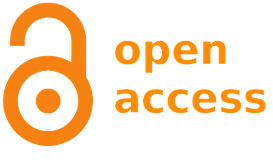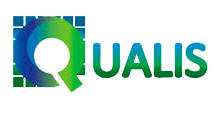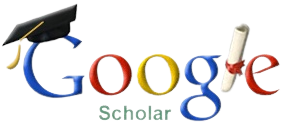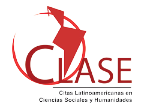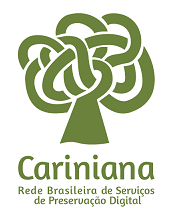Descrição em bibliotecas, arquivos, museus e galerias de arte: linkando recursos e comunidades
DOI:
https://doi.org/10.5433/1981-8920.2017v22n2p449Palavras-chave:
Bibliotecas, Arquivos, Museus e Galerias de Arte, Web Semântica, Linked Data, Descrição e CatalogaçãoResumo
Introdução: A plataforma Web e as tecnologias possibilitaram diferentes formas de interação entre bibliotecas, arquivos, museus, galerias de arte e seus respectivos públicos. A constante necessidade de atualização do profissional da informação diante o desenvolvimento tecnológico, contextualizam a problemática desse estudo, que consiste em identificar quais as tendências para otimizar os canais de comunicação entre usuário e os recursos informacionais, ampliando as possibilidades de representação em arquivos, bibliotecas, museus e galerias de arte. Objetivo: O objetivo é apresentar as temáticas emergentes no âmbito da representação da informação na plataforma Web para profissionais da informação no contexto de bibliotecas, arquivos, museus e galerias de arte. Metodologia: Caracteriza-se como um estudo teórico, pois busca discutir sob a óptica da representação da informação os desafios para integração e cooperação de diferentes contextos, unificados pelas descrições de recursos informacionais, possibilitando assim, a navegação do usuário nos ambientes informacionais e a localização de outras informações e recursos informacionais. Resultados: Diante desse contexto, foi levantado os princípios de representação em bibliotecas, arquivos, museus e galerias de arte, buscando evidenciar suas características e percepções das necessidades dos usuários. Posteriormente foi discutido as tendências e desafios para os profissionais da informação no intuito de reduzir os esforços da representação para criar possibilidades de navegação aos usuários. Conclusões: Por fim, foram apresentadas algumas iniciativas que tem o propósito de criar sistemas que são capazes de ligar dados de ambientes informacionais distintos. Conclui-se que a proposta do reaproveitamento dos dados parece ser uma alternativa para minimizar esforços do retrabalho do profissional.
Downloads
Referências
ARAKAKI, F. A. Linked Data: ligação de dados bibliográficos. 2016. 144 f. Dissertação (Mestrado em Ciência da Informação) - Universidade Estadual Paulista 'Júlio de Mesquita Filho', Marília/SP, 2016. Disponível em: https://repositorio.unesp.br/handle/11449/147979>. Acesso em: 30 maio 2017.
BARBUY, H. Os museus e seus acervos: sistemas de documentação em desenvolvimento. In: CONGRESSO INTERNACIONAL DE ARQUIVOS, BIBLIOTECAS, CENTROS DE DOCUMENTAÇÃO E MUSEUS, 01., 2002, São Paulo. Anais do INTEGRAR: 1º Congresso Internacional De Arquivos, Bibliotecas, Centros de Documentação e Museus. São Paulo: Imprensa Oficial do Estado de SP, 2002.
BIZER, C.; HEATH, T.; BERNERS-LEE, T. Linked Data-the story so far. In: Semantic services, interoperability and web applications: emerging concepts. Information Science Reference (an imprint of IGI Global), USA, p. 205-227, 2009.
CARRASCO, L.; THALLER, M.; VIDOTTI, S. A. B. G. Ontologia Cidoc CRM no contexto dos ambientes digitais de patrimônios culturais. Liinc em Revista, Rio de Janeiro, v. 11, n. 1, 2015. Disponível em: http://revista.ibict.br/liinc/article/view/3628>. Acesso em: 31 maio 2017.
COYLE, K.; BAKER, T. Guidelines for Dublin Core application profiles. DCMI, 2009. Disponível em: <http://dublincore.org/documents/profileguidelines/>. Acesso em: 31 maio 2017.
EMALDI, M. et al. LinkedQR: improving tourism experience through Linked Data and QR codes. In: INTERNATIONAL CONFERENCE ON UBIQUITOUS COMPUTING AND AMBIENT INTELLIGENCE, 6., Vitoria-Gasteiz, Spain. Anais... Springer, 2012. Disponível em: https://link.springer.com/book/10.1007/978-3-642-35377-2#page=389>. Acesso em: 31 maio 2017.
FERREZ, H. D. Documentação museológica: teoria para uma boa prática. Cadernos de Ensaio, [S.l.], n. 2, p. 64-74, 1994.
GLUSHKO, R. J. The discipline of organizing. Massachusetts, EUA: The MIT Press, 2013.
MARCONDES, C. H. Linked Data - dados interligados - e interoperabilidade entre arquivos, bibliotecas e museus na web. Encontros Bibli: revista eletrônica de biblioteconomia e ciência da informação, Florianópolis, v. 17, n. 34, 9 ago. 2012. Disponível em: http://www.redalyc.org/html/147/14723061012/>. Acesso em: 31 maio 2017.
MARCONDES, C. H. Interoperabilidade entre acervos digitais de arquivos, bibliotecas e museus: potencialidades das tecnologias de dados abertos interligados. Perspectivas em Ciência da Informação, Belo Horizonte, v. 21, n. 2, p. 61-83, jun. 2016. Disponível em: http://portaldeperiodicos.eci.ufmg.br/index.php/pci/article/view/2735>. Acesso em: 31 maio 2017.
MEY, E. S. A.; SILVEIRA, N. C. Catalogação no plural. Brasília: Briquet de Lemos, 2009.
OOMEN, J.; BALTUSSEN, L.; VAN ERP, M. Sharing cultural heritage the linked open data way: why you should sign up? In: MUSEUMS AND THE WEB, 16., São Diego, EUA, 2012. Anais… Museus e Web LLC, 2012. Disponível em: https://www.narcis.nl/publication/RecordID/oai:publications.beeldengeluid.nl:3 9>. Acesso em: 31 maio 2017.
PETERSON, D. Forms of representation: an interdisciplinary theme for cognitive science. [S.l.] Intellect Books, 1996.
PIERRE, M. S.; LAPLANT, W. P. Issues in crosswalking content metadata standards. MD: NISO Press, 1998. Disponível em: http://www.niso.org/publications/white_papers/crosswalk/>. Acesso em: 31 maio 2017.
ROUSSEAU, J.-Y.; COUTURE, C. Os fundamentos da disciplina arquivística. Lisboa: Publicações Dom Quixote Lisboa, 1998.
SANTOS, H. P. Modelo CIDOC CRM: interoperabilidade semântica de informações culturais. Brazilian Journal of Information Science, Marília, v.10, n. 1, 2016. Disponível em: http://www2.marilia.unesp.br/revistas/index.php/bjis/article/view/5060>. Acesso em: 31 maio 2017.
SANTOS, P. L. V. A. DA C. Catalogação, formas de representação e construções mentais. Tendências da Pesquisa Brasileira em Ciência da Informação, [S.l.], v. 6, n. 1, p. 1-24, 2013. Disponível em: http://inseer.ibict.br/ancib/index.php/tpbci/article/view/100>. Acesso em: 31 maio 2017.
SANTOS, P. L. V. A. DA C.; SANTANA, R. C. G. Dado e Granularidade na perspectiva da Informação e Tecnologia: uma interpretação pela Ciência da Informação. Ciência da Informação, [S.l.], v. 42, n. 2, p. 199-209, 2013. Disponível em: http://revista.ibict.br/ciinf/article/view/1382>. Acesso em: 31 maio 2017.
SANTOS, P. L. V. A. DA C.; SIMIONATO, A. C.; ARAKAKI, F. A. Definição de metadados para recursos informacionais: apresentação da metodologia BEAM. Informação & Informação, Londrina, v. 19, n. 1, p. 146-163, fev. 2014. Disponível em: http://www.uel.br/revistas/uel/index.php/informacao/article/view/15251>. Acesso em: 31 maio 2017.
SANTOS, P. L. V. A. DA C.; VIDOTTI, S. A. B. G. Perspectivismo e tecnologias de informação e comunicação: acréscimos à Ciência da Informação? DataGramaZero: revista de Ciência da Informação, Rio de Janeiro, n. 3. v. 10, 2009.
SILVA, R. E. DA; SANTOS, P. L. V. A. C. Requisitos Funcionais para Registros Bibliográficos (FRBR): considerações sobre o modelo e sua implementabilidade. RBBD. Revista Brasileira de Biblioteconomia e Documentação, São Paulo, v. 8, n. 2, p. 116-129, fev. 2013. Disponível em: https://febab.emnuvens.com.br/rbbd/article/view/214>. Acesso em: 31 maio. 2017.
SIMIONATO, A. C. Modelagem conceitual DILAM: princípios descritivos de arquivos, bibliotecas e museus para o recurso imagético digital. 2015. 200 f. Tese (Doutorado em Ciência da Informação) - Universidade Estadual Paulista 'Júlio de Mesquita Filho', Marília/SP, 2015. https://repositorio.unesp.br/handle/11449/123318>. Acesso em: 31 maio. 2017.
VOSS, J. Radically open cultural heritage data. 2012. Disponível em: http://www.museumsandtheweb.com/mw2012/papers/radically_open_cultural_ heritage_data_on_the_w>. Acesso em: 31 maio. 2017.
WALLIS, R. Schema.org. 2015. Disponível em: http://schema.org/docs/howwework.html>. Acesso em: 31 maio. 2017.
YAKEL, E. Archival representation. Archival Science, [S.l.] v. 3, n. 1, p. 1-25, 2003. Disponível em: https://pdfs.semanticscholar.org/7dc9/ebd0657b0d343e4e39ff8851f9c6ebf946 f6.pdf>. Acesso em: 31 maio. 2017.
Downloads
Publicado
Como Citar
Edição
Seção
Licença
Copyright (c) 2021 Informação & Informação

Este trabalho está licenciado sob uma licença Creative Commons Attribution 4.0 International License.
A revista se reserva o direito de efetuar, nos originais, alterações de ordem normativa, ortográfica e gramatical, com vistas a manter o padrão culto da língua e a credibilidade do veículo. Respeitará, no entanto, o estilo de escrever dos autores. Alterações, correções ou sugestões de ordem conceitual serão encaminhadas aos autores, quando necessário.
O conteúdo dos textos e a citação e uso de imagens submetidas são de inteira responsabilidade dos autores.
Em todas as citações posteriores, deverá ser consignada a fonte original de publicação, no caso a Informação & Informação.




